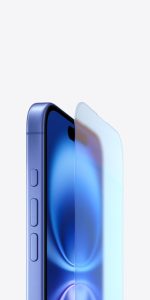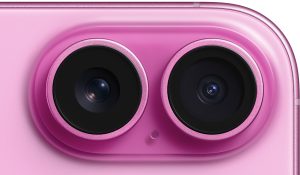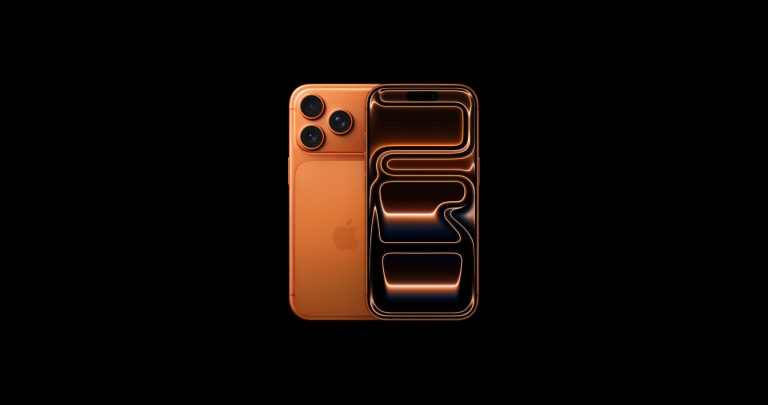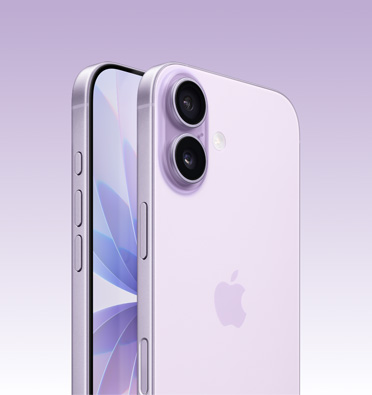Amid the rapid pace of smartphone innovation, the iPhone 16 emerges not merely as a successor to its predecessor but as a more refined evolution of Apple’s design and performance philosophy. Rather than pursuing dramatic, attention-grabbing changes, the device focuses on perfecting details that make the user experience smoother, smarter, and more efficient.
The year 2025 presents an interesting moment to assess how relevant Apple’s “refinement over revolution” strategy remains. Can the iPhone 16 maintain its reputation amid the onslaught of flagship devices with extreme specifications and increasingly competitive pricing? Let’s explore each aspect in depth—from design to performance—to understand what Apple truly delivers with this device.
Specification Table of Iphone 16
iPhone 16 Design

Upon first glance, the iPhone 16 gives the impression that Apple has maintained its classic design identity while introducing subtle, fresher touches. While its overall appearance is not drastically different from its predecessor, small updated details make it feel more refined and mature. In 2025, this design approach demonstrates Apple’s preference for subtle evolution over radical redesigns.
Front Body
On the front, the iPhone 16 retains Apple’s signature look with a 6.1-inch Super Retina XDR OLED display framed by thin, symmetrical bezels. The Dynamic Island remains at the top of the screen, now more seamlessly integrated into iOS 18. The display feels brighter and more responsive, giving a premium impression at first glance. Its surface is protected by the latest-generation Ceramic Shield, claimed to be twice as strong as conventional protective glass, making it durable for daily use.
Rear Body
Unlike previous models, the rear of the iPhone 16 shows the most noticeable change in the camera module design. Apple has moved away from the diagonal layout typical of non-Pro models and adopted a pill-shaped vertical configuration. This adjustment makes the camera layout appear more symmetrical and modern, integrating neatly with the glass back panel.
Interestingly, the camera housing now appears carved directly from the rear glass—rather than being an added protrusion—giving the impression that the entire body is formed from a single solid piece of material. The matte glass texture feels softer and resists fingerprints, creating a clean and premium appearance. These small details make the iPhone 16 look more professional and comfortable to hold.
Side Body (Right & Left)
On the right side, the power button is now positioned alongside a new Camera Control Button—a multifunctional button supporting capacitive touch and two-stage press. It functions like a professional camera shutter, allowing half-press focus and full-press photo capture. On the left, the volume buttons and Action Button are retained, providing a familiar interaction experience for long-time users.
The aluminum frame remains sturdy with a matte finish that feels soft and non-slip. The transition between the glass and frame is smooth, without sharp edges, enhancing the premium impression typical of Apple’s design.
Top & Bottom Body
The top of the iPhone 16 is clean, with no ports or buttons, maintaining design simplicity. At the bottom, there is still a USB-C port, the main microphone, and stereo speakers that deliver balanced and clear sound. Apple appears to continue prioritizing design harmony by maintaining visual balance between the top and bottom of the device.
Overall, the iPhone 16 presents a design that feels mature and elegant, even if not entirely new. With small changes that make a significant impact on aesthetics and ergonomics, Apple successfully preserves its classic character while introducing a relevant refreshing touch in 2025.
Display Iphone 16

Moving on to the display, the iPhone 16 retains a 6.1-inch Super Retina XDR OLED panel with a resolution of 2556 x 1179 pixels and a pixel density of approximately 460 ppi. Spec-wise, this panel is similar to that used in the iPhone 15, with no significant changes in size or resolution.
The display supports HDR10 and Dolby Vision, with a typical brightness of up to 1,000 nits and a peak brightness of around 2,000 nits. The second-generation Ceramic Shield remains for improved scratch and minor impact resistance. Additionally, features such as True Tone and Haptic Touch are still available to adjust the display according to ambient lighting conditions.
At the top of the screen, a pill-shaped cutout—known as the Dynamic Island—houses the front camera and Face ID system. This element continues to be a key visual feature of the modern iPhone front design.
Performance & Brightness Testing
According to GSMArena testing, the display reaches a maximum brightness of approximately 857 nits in manual mode and up to 1,708 nits in automatic mode. These values are consistent with the previous model and remain adequate for outdoor use. Meanwhile, the minimum brightness measures around 1 nit, comfortable for nighttime use.
Features & Limitations
The OLED panel is not LTPO, so the refresh rate remains limited to 60Hz and does not support Always-On Display. Support for HDR10 and Dolby Vision continues, with HDR video playback possible on part of the screen without requiring full-screen coverage.
Display Conclusion
Based on observations and test data, the iPhone 16 display delivers consistent quality compared to its predecessor. While there are no significant upgrades, it still provides sharp visuals, good contrast, and sufficiently high brightness for general use. Overall, the panel remains adequate for daily tasks and light entertainment in 2025.
iPhone 16 Audio & Speaker
Apple’s signature sound remains present in the iPhone 16—clear, balanced, and retaining its characteristic smoothness without excessive high tones. While it may not represent a major change from the previous generation, the audio quality still reflects Apple’s attention to a clean and controlled listening experience.
The device employs a hybrid stereo speaker system: the earpiece at the top functions as the second speaker, while the main unit is located at the bottom next to the USB-C port. The combination produces a fairly wide sound distribution when the device is used in landscape orientation.
GSMArena Test Results
According to GSMArena testing, the iPhone 16 achieved a loudness score of approximately -25.5 LUFS, categorized as Excellent. This indicates that, although the volume may not be the loudest among flagship devices, the sound remains solid and rich in detail. Vocal tones are clear, and instruments are well-preserved without distortion.
Daily Use
In everyday use, the iPhone 16’s audio quality feels comfortable and natural. Whether listening to music, watching videos, or taking phone calls, the sound remains stable and non-fatiguing. Voice notes and video calls also come through clearly with distinct separation of voices. It may not be extremely loud, but it is ideal for users who prioritize clarity over sheer volume.
Next, we will look at how improvements in the camera department enhance the visual experience on this series.
Camera

GSMArena Tests & Daily Use
According to GSMArena’s photo and video tests, the Apple iPhone 16 demonstrates consistent camera performance across various lighting conditions. Images appear sharp with balanced contrast and Apple’s signature natural colors. The main camera retains details well, while the ultrawide lens captures a sufficiently wide field of view without excessive distortion.
In video recording, results are stable thanks to the sensor-shift OIS system and accurate color processing. Lens transitions are also smooth, particularly when switching from the main camera to the ultrawide.
For everyday use, the iPhone 16 offers a responsive and straightforward photography experience. The automatic mode quickly adjusts exposure, while new features such as Tone Control help users achieve the desired results without extensive additional settings.
Overall, the iPhone 16 retains Apple’s signature approach—cameras that are easy to use, stable, and reliable for various daily documentation needs.
Hardware & Performance Iphone 16
When it comes to performance, the iPhone 16 brings significant improvements over its predecessor. Apple now uses the A18 chipset, manufactured with the second-generation 3nm process, making it more efficient while maintaining high performance. The six-core processor consists of two high-performance cores and four efficiency cores, while the five-core GPU now supports smoother hardware ray tracing for gaming.
Additionally, RAM capacity has increased to 8GB, which is a notable upgrade for the non-Pro iPhone series. As a result, app switching feels smoother and loading times are shorter. In terms of storage, the 128GB variant continues to use Apple’s fast NVMe technology, ensuring high read and write speeds.
Performance Testing & Benchmarks
According to GSMArena testing, iPhone 16 benchmarks show a clear improvement over the previous generation. The A18 chipset recorded approximately 3,263 points for single-core and 7,929 points for multi-core performance in Geekbench 6.
In graphics tests such as 3DMark Wildlife Extreme, the device also achieved high scores with stable GPU performance. For daily activities—ranging from multitasking between apps and menus to running demanding games like Genshin Impact or Call of Duty Mobile—the iPhone 16 feels smooth and responsive.
Thermal Efficiency & Stress Testing
Apple has enhanced the iPhone 16’s cooling system with a new thermal design using recycled aluminum to maintain stable temperatures under heavy loads. In stress tests, CPU and GPU performance remained at approximately 78% of their initial capacity after intensive usage, demonstrating good efficiency and stability.
In practical use, the iPhone 16 feels warm but not excessive, even after long gaming sessions or heavy multitasking. Its performance remains consistent without significant drops, making it one of the smartphones with the best balance between performance and power efficiency in its class.
iPhone 16 Battery & Charging
Moving from performance, let’s examine battery endurance. The iPhone 16 is equipped with a 3,561 mAh battery, slightly larger than its predecessor. This capacity is sufficient for daily use without frequent recharging.
Battery Life
According to GSMArena testing, the iPhone 16 demonstrates solid battery performance. Test results recorded:
- Active usage: 15 hours 42 minutes
- Gaming: 8 hours 53 minutes
- Web browsing: 16 hours 12 minutes
- Phone calls: 26 hours 3 minutes
- Video playback: 20 hours
These results indicate that the iPhone 16 can support daily activities such as browsing, social media, and video streaming without worrying about rapid battery depletion.
Charging
The iPhone 16 supports fast wired charging, although Apple does not specify official wattage. In testing, the device can charge up to 33% in 15 minutes and 59% in 30 minutes using a 30W PD charger. A full charge from 0% to 100% takes approximately 1 hour 42 minutes, with the final 15% charging more slowly, as per Apple’s standard.
In addition to wired charging, MagSafe wireless charging is supported up to 25W with a compatible adapter. Reverse wireless charging is also available, albeit limited to around 5W, sufficient for powering small accessories such as AirTags or AirPods.
Battery Health Management
iOS 18 introduces a Battery Health feature, allowing users to set charging limits between 80% and 100% and monitor battery cycles. This feature helps extend overall battery lifespan and maintain stable performance over the long term.
Connectivity & Network
Connectivity
Following its solid battery performance, using the iPhone 16 for various connections feels consistently reliable. Tri-band Wi-Fi 7 and Bluetooth 5.3 with LE ensure the device remains connected to networks and accessories without interruption. The second-generation Ultra Wideband (UWB) chip offers more precise Find My tracking, complete with directional arrows and extended range, making it easier to locate devices or friends in crowded areas. Some regions also support satellite connectivity for emergency calls or Roadside Assistance, although these services are still limited.
The USB-C port provides data transfer speeds of up to 480 Mbps and DisplayPort video output support up to 4K. While there is no dedicated desktop mode, screen mirroring to a monitor or projector remains smooth, allowing quick external content display with ease.
Network
In everyday use, cellular connectivity feels stable and fast. The device supports a wide range of standards, from GSM, CDMA, HSPA, EVDO, LTE, to 5G, with sufficient HSPA, LTE, and 5G speeds for streaming, video calls, or light online gaming. Broad band support ensures signal reliability across various carriers and regions, maintaining uninterrupted communication.
With this combination of connectivity and network support, the iPhone 16 handles daily activities—ranging from browsing and calls to entertainment—without frequent adjustments or concerns about losing signal.
Features & Software Iphone 16
After covering network and connectivity, daily interactions feel smoother with the pre-installed iOS 18. While its main interface may not seem revolutionary, the extensive home screen and overall interface customization options allow users to tailor the device’s appearance to their personal style. This touch makes everyday use feel more unique compared to previous iOS versions.
iOS 18 continues to offer long-term updates, with at least five years of support for all iPhone models, ensuring the device remains relevant and secure over time. The system also includes several safety and convenience features such as Face ID via the TrueDepth camera, Emergency SOS, and Crash Detection, which safeguard users in various situations.
Buttons & Connectors
The iPhone 16 series comes with a range of external controls, including the Action Button, volume up/down buttons, side button, built-in stereo speakers, and microphones. These controls provide quick access to essential functions such as Camera, Flashlight, Voice Memos, Visual Lookup, Music Recognition, Translation, Magnifier, Control Center, Shortcuts, and Accessibility features.
Sensors
The device integrates Face ID, a barometer, high-dynamic-range gyroscope, high-g accelerometer, proximity sensor, and dual ambient light sensors. These sensors ensure precise detection and optimal responsiveness across various applications and daily use scenarios.
Operating System
The iPhone 16, 16 Plus, 16 Pro, and 16 Pro Max come pre-installed with the latest iOS 18. Although Apple presents this iteration as one of its most significant updates, daily user experience reflects relatively subtle changes. Nonetheless, iOS 18 offers broad personalization options across the home screen and interface, allowing users to create a unique look that was previously limited in older iOS versions.
Accessibility Features
iOS 18 introduces comprehensive accessibility features to support vision, mobility, hearing, speech, and cognitive needs. These tools ensure users can interact effectively with the device. Included features are VoiceOver, Zoom, Magnifier, Switch Control, AssistiveTouch, Eye Tracking, RTT and TTY support, Live Captions, Personal Voice, Live Speech, Type to Siri, Voice Shortcuts, and Spoken Content.
Languages & Global Support
iOS 18 supports a wide range of languages, including English (Australia, UK, US), Chinese (Simplified, Traditional, Traditional – Hong Kong), French, German, Italian, Japanese, Korean, Spanish, Arabic, Bulgarian, Catalan, Croatian, Czech, Danish, Dutch, Finnish, Greek, Hebrew, Hindi, Hungarian, Indonesian, Kazakh, Malay, Norwegian, Polish, Portuguese, Romanian, Russian, Slovak, Swedish, Thai, Turkish, Ukrainian, and Vietnamese. The devices are also compatible with hearing aids to optimize accessibility.
Operating System & Additional Sensors
The iPhone 16 series runs on iOS 18, a mobile operating system known for its security and personalization. Additional sensors include Face ID, barometer, high-dynamic-range gyroscope, high-g accelerometer, proximity sensor, and dual ambient light sensors, supporting a range of security, navigation, and seamless interactive experiences.
Conclusion
The iPhone 16 offers a balanced combination of performance, features, and the benefits of the Apple ecosystem. While many other smartphones provide a variety of features, the iPhone 16 remains a standout choice in the 2025 smartphone market for users who prioritize seamless integration with Apple, reliable security, and advanced accessibility.
Reference sources: GSMArena and Apple.









Leave a Reply